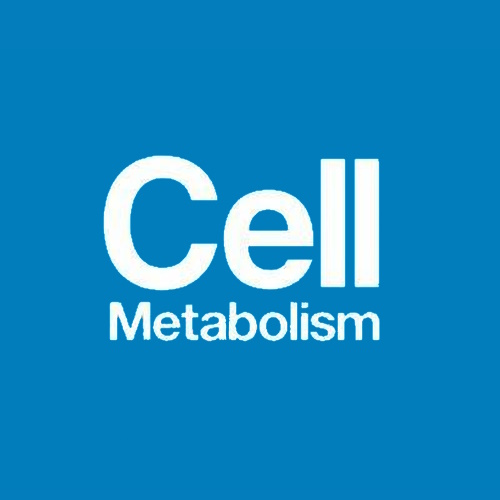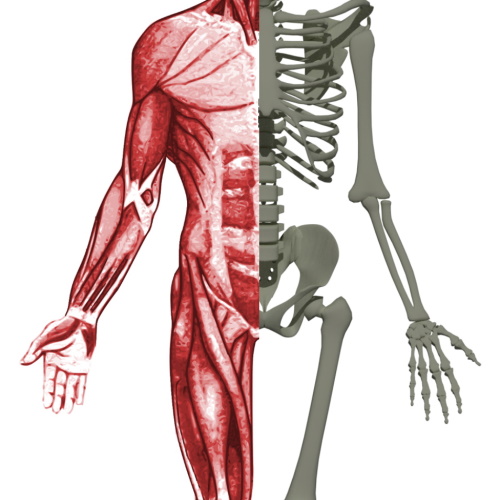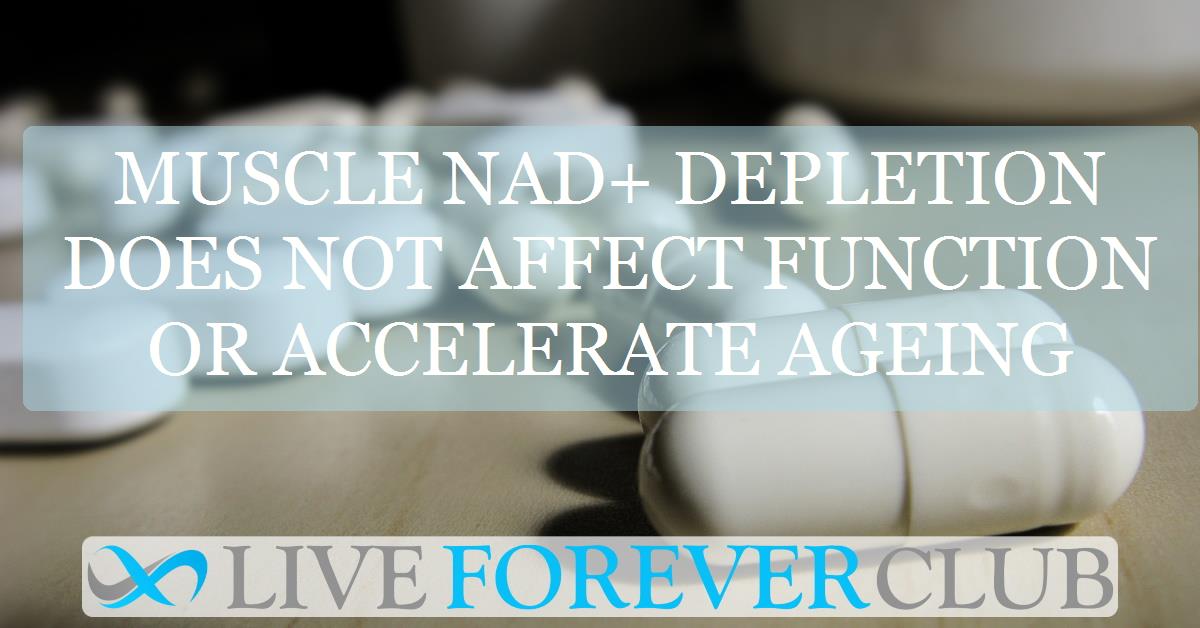When we talk about ageing, most people think about wrinkles, grey hair, and slowing down. But beneath the surface, our cells tell a deeper story. One molecule that keeps popping up in this story is NAD+ (nicotinamide adenine dinucleotide).
Scientists have long believed that losing NAD+ harms our cells. Many ageing experts think lower NAD+ leads to weaker muscles, less energy, and faster decline. But what if this isn’t true? What if our muscles don’t actually need as much NAD+ as we thought?
A new study published in Cell Metabolism challenges this idea. Researchers showed that even when they depleted NAD+ in skeletal muscle by 85%, the muscles still worked just fine. Let’s unpack this surprising finding and explore what it means for ageing, muscle health, and the future of supplements.
What is NAD+ and why do we care?
NAD+ is a crucial molecule in every cell. It helps convert food into energy and supports many repair processes. It also plays a big role in maintaining our mitochondria — the cell’s “power plants.”
As we age, NAD+ levels naturally drop. Studies link low NAD+ to muscle weakness, fatigue, and metabolic problems. That’s why many people try NAD+ boosters or supplements, hoping to slow ageing or improve energy.
But most of these connections come from observing correlations, not direct cause-and-effect experiments. This new research set out to test this connection head-on.
The experiment: cutting NAD+ in muscles
To truly understand what happens, researchers created a special mouse model. They used genetic tricks to shut off a key enzyme called NAMPT, which is needed to make NAD+ in muscle cells.
After deleting NAMPT in adult mice, the researchers saw muscle NAD+ levels plummet by 85%. You might expect these mice to become weak, show poor endurance, or have mitochondrial problems.
But that didn’t happen.
Muscle structure stayed normal
When the team looked at muscle fibres under the microscope, they saw no signs of damage. The muscle cells looked healthy. The size and shape of fibres were normal.
The researchers also checked muscle force. Using isolated muscles, they measured contraction strength and resistance to fatigue. Surprisingly, the muscles performed almost the same as in normal mice. In some cases, the NAD+-depleted muscles even showed better recovery after repeated contractions.
This suggests that muscle function is remarkably robust, even without much NAD+.
Exercise tolerance was intact
Next, they tested exercise performance. The mice ran on wheels and treadmills, performing different exercise challenges. Both normal and NAD+-depleted mice ran similar distances and speeds. They tolerated high-intensity efforts without major issues.
Blood tests after exercise did show higher lactate in NAD+-depleted mice. This suggested more reliance on glycolysis (breaking down glucose without oxygen). But overall, their endurance and peak capacity were unaffected.
Mitochondria kept working
One big worry about losing NAD+ is that mitochondria might fail. Mitochondria use NAD+ to make ATP, the energy currency of cells.
Researchers measured mitochondrial respiration directly. Despite a 50% reduction in mitochondrial NAD+, the mitochondria kept producing energy normally. Oxygen consumption rates and ATP production stayed stable.
Interestingly, some subtle changes appeared. For example, NAD+-depleted mitochondria showed slightly different reactive oxygen species (ROS) production patterns. But these changes didn’t translate into functional impairments.
No signs of accelerated ageing
To see if NAD+ loss might speed up ageing, researchers followed the mice long-term. Even after nearly two years — equivalent to old age in mice — the NAD+-depleted mice showed no signs of faster muscle decline.
Muscle size, structure, and mitochondrial function remained similar to normal mice.
Researchers also checked DNA methylation, an “epigenetic clock” marker for biological ageing. Both normal and NAD+-depleted mice aged at the same rate based on this molecular signature.
Surprising observations
One unexpected finding: NAD+-depleted muscles had more centralised nuclei in fibres. Normally, muscle nuclei sit at the edges. Central nuclei often mark repair or regeneration. However, these mice didn't show muscle damage or function loss.
This suggests the muscles may have been remodelling more actively, perhaps as a protective adaptation.
Whole-body metabolism stayed stable
Skeletal muscle plays a big role in overall metabolism. It helps control blood sugar, uses fatty acids, and stores glycogen.
Even with NAD+ depletion, body weight, fat content, and overall energy expenditure stayed normal. Blood glucose regulation, insulin response, and fat metabolism were all intact.
The mice even maintained normal behaviour patterns, activity levels, and feeding habits as they aged.
What does this mean for NAD+ supplements?
Many people use NAD+ precursors (like nicotinamide riboside or NMN) to boost levels. Some believe these will strengthen muscles, improve exercise capacity, or slow muscle ageing.
This study suggests that at least in muscles, NAD+ levels can drop dramatically without functional consequences.
Does this mean NAD+ supplements are useless? Not necessarily. Other tissues like the brain, liver, or heart might rely more heavily on NAD+. Also, embryonic or developmental stages may be different. In fact, mice that lacked NAD+ during muscle development showed severe degeneration.
But for adults aiming to improve muscle function, this data challenges the narrative that boosting NAD+ is always essential.
Why are muscles so resilient?
Muscles might have evolved to handle large metabolic swings. During intense exercise, energy demand skyrockets, and NAD+/NADH ratios fluctuate wildly.
This flexibility may help muscles adapt to low NAD+ by using alternative pathways, increasing glycogen storage, or enhancing glycolytic flux.
Moreover, the study found no major shifts in the overall muscle gene expression or protein levels. Only a few genes, mostly related to the experimental model itself, showed changes.
Mitochondrial supercomplexes: no big changes
Another interesting part of this research involved mitochondrial “supercomplexes.” These are assemblies of respiratory complexes that help improve efficiency and reduce energy loss.
Despite NAD+ depletion, these supercomplexes stayed stable. The overall mitochondrial network structure, membrane lipid composition, and respiratory complex organisation were unchanged.
ROS: the subtle story
While overall muscle function was intact, some differences in reactive oxygen species (ROS) were noted.
For example, after exercise, NAD+-depleted muscles didn't show the usual rise in ROS. Normally, this burst helps trigger beneficial adaptations to training.
The NAD+-depleted muscles also had lower levels of glutathione (GSH), a key antioxidant. This suggests some vulnerability to oxidative stress, though no clear damage appeared in this study.
Ageing-related changes: who is to blame?
Ageing brings many changes to muscle: fibre shrinkage, mitochondrial dysfunction, and metabolic decline.
Many believed NAD+ decline was a driver of these problems. This study strongly suggests otherwise, at least in muscle.
The researchers found that age-related changes in muscle proteins and gene expression were independent of NAD+ levels. Instead, other factors like chronic inflammation, hormonal changes, and lifestyle might play bigger roles.
Central nuclei: sign of ongoing repair?
One puzzle is why NAD+-depleted muscles had more centralised nuclei, often a sign of regeneration.
Despite this, there was no sign of damage or weakness. The researchers speculate that lower NAD+ might subtly stimulate myoblast fusion or remodelling.
Longer studies might clarify whether this is protective or if it hints at hidden changes.
Are there limits to this study?
Yes. This study focused on adult mouse skeletal muscle. The results might not apply to other tissues or to humans exactly the same way.
Also, researchers didn’t test very strenuous exercise challenges over a lifetime or look at muscle regeneration after injury.
Finally, some subtle changes may have been missed without more extreme stress tests.
A call to rethink NAD+ and muscle ageing
These findings push us to rethink NAD+ in the context of muscle ageing.
Instead of assuming that NAD+ decline causes muscle weakness, we now see muscles can adapt remarkably. They maintain function, structure, and even support normal metabolism despite massive drops in NAD+.
Future research should look at other tissues and test whether certain muscle types or conditions (like injury recovery) depend more on NAD+.
Takeaway for fitness enthusiasts and ageing warriors
If you’re taking NAD+ boosters mainly to protect or enhance muscle function, this study suggests you might not need to worry so much about NAD+ in your muscles.
Focus on proven strategies: strength training, proper nutrition, regular activity, and sleep. These habits clearly maintain muscle health and strength as we age.
Supplements still have their place, but perhaps not in the way we once believed.
The future of muscle ageing research
This work opens doors to new questions. Can we identify which tissues truly need NAD+ to stay young? Can targeted NAD+ therapies help specific problems like neurodegeneration or heart failure?
Also, what do these findings mean for regenerative therapies or injury recovery? Understanding the true role of NAD+ could guide smarter, more precise treatments.
Final thoughts
This remarkable study reveals that skeletal muscle is much tougher than we imagined. Even when stripped of most of its NAD+, it soldiers on — strong, steady, and resilient.
While NAD+ remains a vital molecule, this research teaches us an important lesson: biology is full of surprises. Our cells often find ways to adapt that we don’t fully understand yet.
For now, celebrate your body’s quiet strength. Keep moving, keep fuelling it right, and remember — sometimes, we’re stronger than we think.
The study is published in the journal Cell Metabolism. It was led by Jonas T. Treebak from University of Copenhagen.







